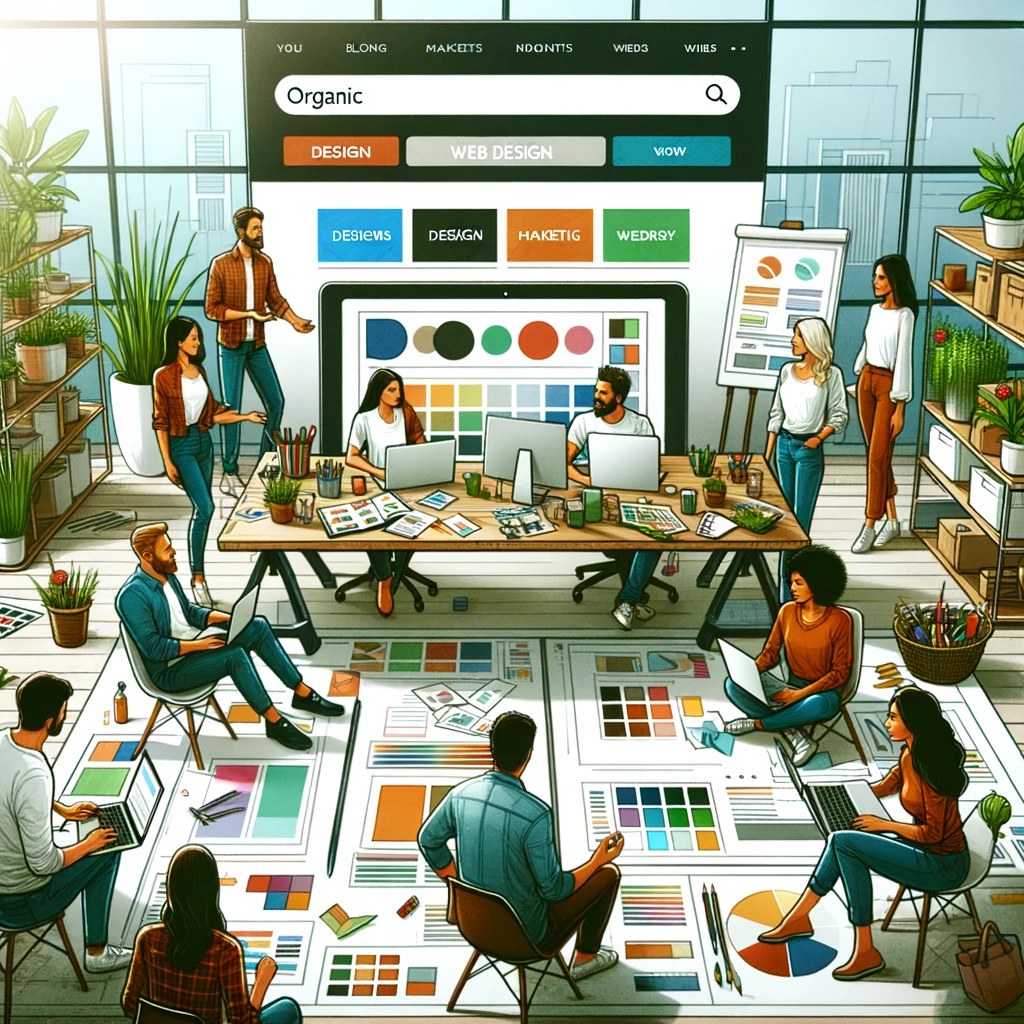Web design is a crucial element of any digital marketing strategy. It not only impacts how your audience perceives your brand but also influences your site’s performance in search engines and its overall user experience. This article delves into how web design plays a pivotal role in your digital marketing efforts, ensuring your online presence is both effective and engaging.
Understanding Web Design and Digital Marketing
Web design refers to the process of creating the visual layout, structure, and functionality of a website. Digital marketing encompasses all marketing efforts that use the internet or electronic devices. The intersection of web design and digital marketing lies in how a well-designed website can enhance all aspects of digital marketing, from SEO to user engagement.
The Impact of Web Design on User Experience (UX)
User experience (UX) is a critical component of digital marketing. A website’s design significantly affects UX through its navigation, layout, and color scheme. For instance, an intuitive navigation system helps users find information quickly, while a clean layout with a harmonious color scheme makes the website visually appealing. Poor UX can lead to high bounce rates, where users leave the site quickly, negatively impacting your digital marketing efforts.
Web Design and Search Engine Optimization (SEO)

Search engine optimization (SEO) is essential for driving organic traffic to your site. Web design plays a vital role in SEO by ensuring that your site is responsive, fast, and mobile-friendly. Elements such as site speed, mobile optimization, and proper use of HTML tags can influence your search engine rankings. A well-designed website is easier for search engines to crawl and index, improving your visibility in search results.
Web Design and Conversion Rate Optimization (CRO)
Conversion rate optimization (CRO) focuses on increasing the percentage of website visitors who take a desired action. Web design impacts CRO through elements like call-to-action (CTA) buttons, forms, and landing pages. Effective web design can guide users towards these actions seamlessly, improving conversion rates. For example, strategically placed CTAs and user-friendly forms can enhance the user journey and boost conversions.
The Role of Visual Design in Branding
Visual design is a powerful tool for establishing and maintaining brand identity. Consistent use of colors, fonts, and imagery across your website strengthens your brand’s visual identity. Web design contributes to branding by creating a cohesive look that reflects your brand’s values and personality. Effective branding through web design can differentiate your business from competitors and build trust with your audience.
Mobile Optimization in Web Design
With the increasing use of mobile devices, having a mobile-friendly website is more important than ever. Mobile optimization involves designing your website to be responsive and functional on all devices, ensuring a seamless user experience. Key elements of mobile optimization include responsive design, fast loading times, and easy navigation. A mobile-optimized website enhances your digital marketing success by catering to the growing number of mobile users.
Integrating Social Media with Web Design
Social media integration is a crucial aspect of digital marketing. By incorporating social media features into your web design, such as share buttons and social feeds, you can enhance user engagement and expand your reach. Integrating social media into your web design helps create a cohesive digital marketing strategy, allowing users to easily share your content and connect with your brand on various platforms.
Analytics and Tracking in Web Design
Data is invaluable in digital marketing. Tools like Google Analytics and heatmaps help track website performance, providing insights into user behavior and site effectiveness. By analyzing this data, you can make informed decisions to improve your web design and marketing strategies. Tracking metrics such as page views, bounce rates, and conversion rates can highlight areas for improvement and guide your digital marketing efforts.
Future Trends in Web Design and Digital Marketing
The digital landscape is constantly evolving, with new trends emerging regularly. Technologies like artificial intelligence (AI) and virtual reality (VR) are beginning to influence web design. AI can enhance user experience through personalized content, while VR offers immersive website interactions. Staying ahead of these trends is crucial for maintaining a competitive edge in digital marketing.
Conclusion
Web design is an integral part of your digital marketing strategy. From enhancing user experience to improving SEO and CRO, a well-designed website can significantly impact your digital marketing success. By staying informed about the latest trends and continuously optimizing your web design, you can ensure your online presence remains effective and engaging.

No Responses